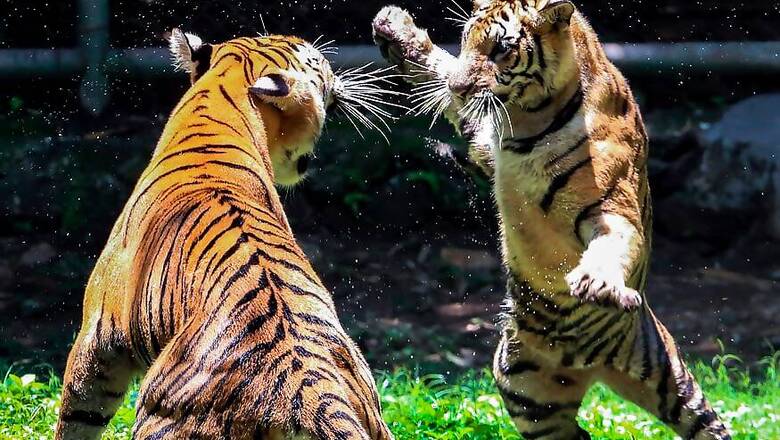
views
New Delhi: With tiger populations in south Asia slowly inching towards the carrying capacity of its forest, the Global Tiger Forum (GTF) expressed concerns over the status of wild tigers in southeast Asian countries.
Tigers were most likely entirely extinct from Cambodia, Laos and Vietnam, while there had been no recent updates from China and Indonesia, it said.
“But there is a scope for revival of tiger populations in southeast Asia, particularly in Malaysia and Thailand,” said Rajesh Gopal, secretary general, GTF, an international, inter-governmental body that works to protect tigers in the wild.
A key concern, Gopal explained was that south Asian homes of the big cat were inching towards exceeding their carrying capacity (the maximum size of a population beyond which the environment can’t sustain the species).
Apart from India, Nepal (235 tigers in 2018) and Bangladesh (114 tigers in 2018) have also released their tiger census. “Broadly put, the status of wild tigers in south Asia and Russia range from sub-optimal but the situation is much better in comparison to wild tiger status in southeast Asian tiger range countries (TRCs),” said the forum.
“There is no recent update from China and Indonesia. Wild tigers are almost extinct in Cambodia, Laos and Vietnam. The GTF appeals to other TRCs for time-bound appraisal of wild tiger status within their country for strengthening the ongoing GTRP process," it added.
The GTF was formed in 1993 on recommendations from an international symposium on tiger conservation in New Delhi. The first meeting of the tiger range countries to set up the forum was held in 1994, in which India was elected to the Chair and was asked to form an interim secretariat.
In 1997, the GTF became an independent organisation. Bangladesh was Chair twice followed by Nepal. India was elected as Chair in March 2011 and was replaced by Bhutan in 2014.
A total of 2,461 individual tiger photos were captured leading to an estimated tiger population of 2,967, while the population was increasing at the rate of 8 percent, found the Status of Tigers in India – 2018 report.
While tiger occupancy has increased in MP and Andhra Pradesh, losses were found in the northeast, that the report said was due to “poor sampling”, while continued losses in Chhattisgarh and Odisha were flagged as a “matter of concern”. MP and Karnataka have the highest number of big cats, the report said.
“The poor and continuing decline in tiger status in Chhattisgarh and Odisha is a matter of concern,” it said.




















Comments
0 comment